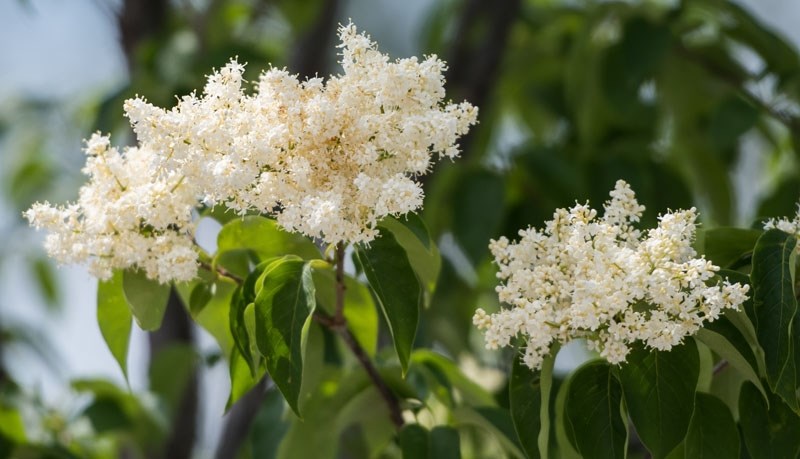A walk along St. Anne Street near Grandin Medical Clinic was extra special this week because of two varieties of flowering trees: Japanese lilacs and hawthorn. Presently these trees are about 10-feet tall and they are unlikely to get much higher than 15 or 20 feet in height making them perfect for either the public avenue or for the home garden.
The Ivory Silk Japanese tree lilacs are located on the boulevard on the north side of Grandin Medical Clinic near the traffic circle. The blossoms are feathery looking and are said to be attractive to butterflies as well as people.
“Japanese tree lilacs are award-winning trees and they win awards year after year,” said Jim Hole of Hole’s Greenhouses and Gardens.
The lilacs are good for small yards, they don’t tend to send out suckers and in the fall, there is no fruit to rake or clean. Hole recommends pruning the trees to maintain their shape.
“Any tree is better for pruning. It helps the tree if you prune for structure. That means pruning out crossed branches and V-shaped branches. But of all the problems people have with trees, I would say problems with Japanese tree lilacs are rare,” Hole said, adding that people like the trees because the blooming period tends to be later in June.
“They extend the blooming season and colour in your yard,” Hole said.
Hawthorns: Blossoms on the trees in front of St. Albert Place resemble apple blossoms and they will produce a red fruit in the fall.
“Hawthorns and the Japanese lilacs have a “wow” factor to them because of their blossoms and fragrance,” Hole said.
Hawthorns do have a down side, Hole said, because they are prone to leaf rust.
“They can develop Juniper Hawthorn rust, and it’s hard to treat. But though the rust can be unsightly and the leaves fall off, most can endure a lot of rust. They are a long-lived tree and in the East live 50 to 60 years,” Hole said.
Mountain Ash: The old standby mountain-ash trees are well known to anyone walking in the Sturgeon Heights neighbourhood in St. Albert, where they are on many boulevards. These beautiful trees can be messy as they drop their red berries in the fall, but they also attract birds, especially Bohemian waxwings, which come in December and January to feed on any remaining fruit.
“A lot of people don’t want the berry drop but I like them because they also bloom a bit later than most fruit trees and I like them in winter,” Hole said.
Mock Orange: This is another late-spring blooming shrub boasting clouds of white blossoms.
“Mine is as tall as the fence,” said St. Albert Garden Club vice-president Lucy Krisco. “The bees love it and every time I walk by it in the yard, I notice the perfume.”
Amur maple: These trees are not known for spring blossoms but instead are treasured by home gardeners for their fiery red fall colour.
“Like all maples they drop the whirlybird seeds in spring but in fall they are gorgeous,” said Hole, adding that he often takes a September drive on Edmonton’s 97 Street, north of 137 Ave, just to see the red maples planted there.
“The maples there should be famous,” Hole said. “I’ve seen the traffic stop because people drive by to see the trees.”
Sumac: Sumac are more properly called shrubs than trees but they can reach a height of six feet, Hole said.
“Sumacs have red spiky flowers in the summer. The Staghorn Sumac is so beautiful I would make it a focal point in the yard,” Hole said.




